Introduction to DIY Outdoor Gas Fireplaces
The Appeal of Outdoor Gas Fireplaces
Outdoor gas fireplaces have become increasingly popular as homeowners look to extend their living spaces and enjoy their backyards year-round. These fireplaces provide warmth and ambiance, making outdoor areas more inviting and functional. Gas fireplaces, in particular, are favored for their convenience, cleanliness, and ease of use compared to wood-burning options. They can be ignited with a simple switch, produce consistent heat, and require minimal maintenance, making them an excellent addition to any outdoor space.
Benefits of DIY Kits
DIY outdoor gas fireplace kits offer an attractive solution for homeowners who want to add a fireplace to their outdoor space without the cost and hassle of hiring a professional. These kits are designed to be user-friendly, providing all the necessary components and detailed instructions to guide you through the installation process. With a DIY kit, you can save money on labor costs and have the satisfaction of completing the project yourself. Additionally, many kits are customizable, allowing you to choose the style, size, and features that best suit your needs and preferences.
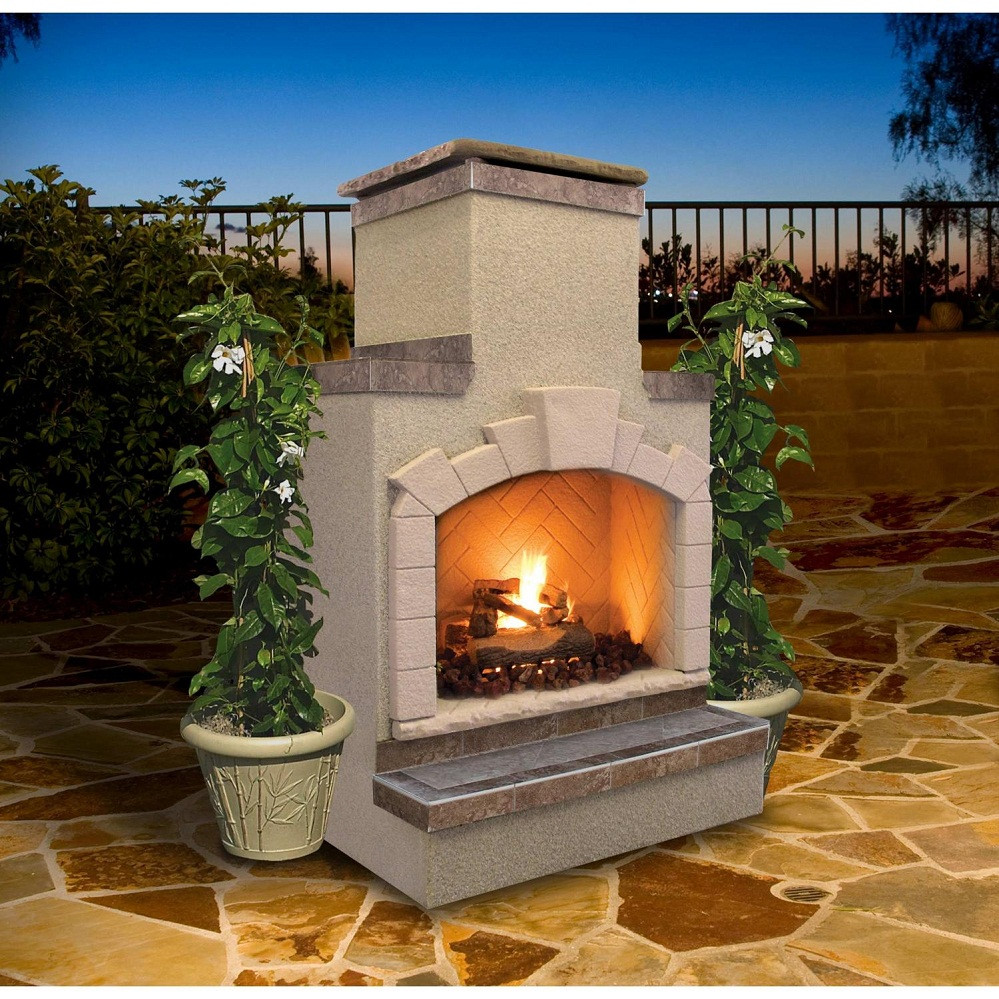
Types of Outdoor Gas Fireplace Kits
There are various types of outdoor gas fireplace kits available, each designed to meet different needs and preferences. Some kits are built-in models meant to be integrated into existing structures, such as outdoor kitchens or patios. Others are freestanding units that can be placed anywhere in your yard. Additionally, there are fire pit kits, which offer a more open design and can serve as a central gathering spot. Each type of kit has its own set of features and benefits, so it’s important to consider your specific requirements when selecting a kit.
Key Components of a Fireplace Kit
A typical DIY outdoor gas fireplace kit includes several essential components. These usually include the firebox or burner, gas lines and connections, a control panel or ignition system, and decorative elements such as logs or glass beads. Some kits may also include enclosures or surrounds to complete the look of the fireplace. It’s important to carefully review the components included in your kit to ensure you have everything you need for a successful installation.
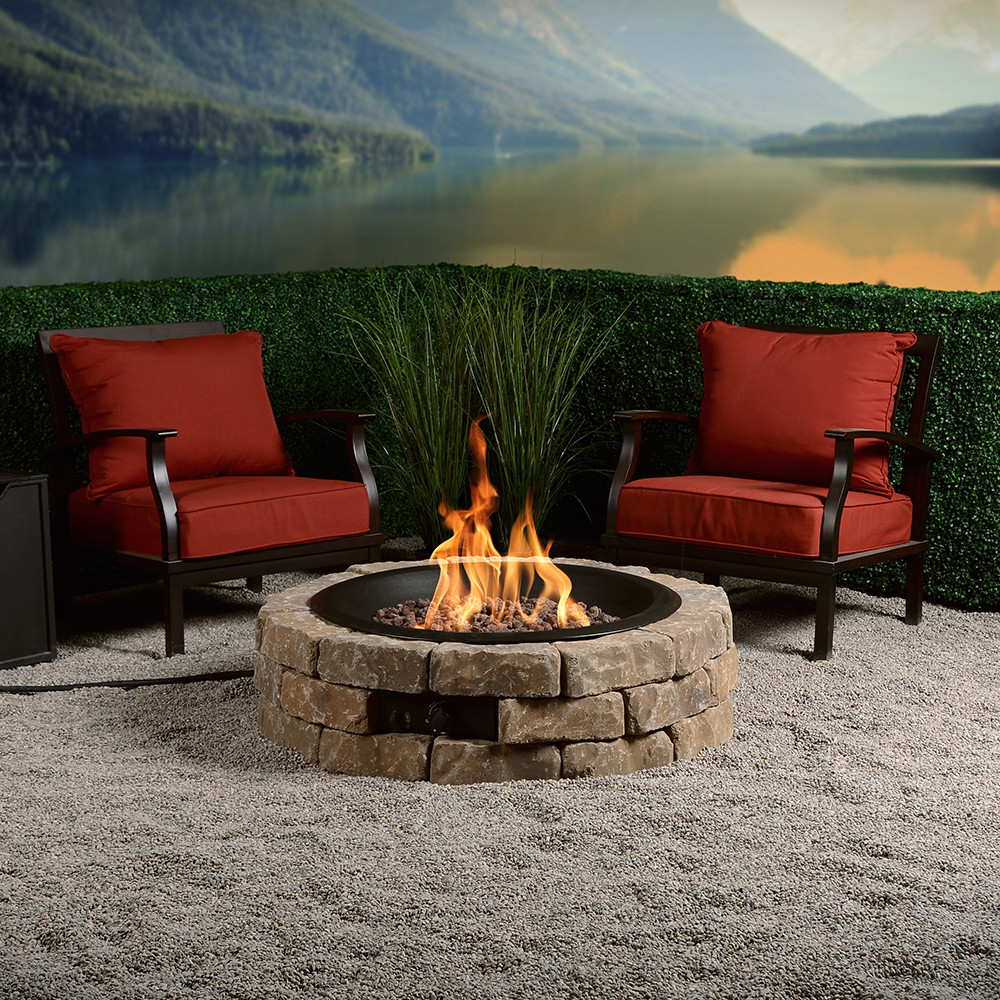
Safety Considerations
Safety is paramount when installing and using an outdoor gas fireplace. Proper installation and maintenance are crucial to preventing gas leaks and ensuring safe operation. Always follow the manufacturer’s instructions and local building codes when installing your fireplace. Additionally, it’s important to regularly inspect the fireplace and its components for signs of wear or damage. Installing a carbon monoxide detector nearby can provide an added layer of safety, alerting you to any potential gas leaks.
Planning Your Project
Before you begin your DIY outdoor gas fireplace project, it’s important to do some planning. Start by selecting a suitable location for your fireplace, keeping in mind factors such as proximity to your home, wind direction, and available space. Next, check local building codes and regulations to ensure your project complies with any necessary permits or restrictions. Finally, gather all the tools and materials you’ll need, and review the instructions carefully to familiarize yourself with the installation process. Proper planning will help ensure a smooth and successful project.

Selecting the Right DIY Kit
Understanding Your Needs
Choosing the right DIY outdoor gas fireplace kit starts with understanding your specific needs and preferences. Consider how you plan to use the fireplace and the overall aesthetic you want to achieve. If you’re looking for a cozy gathering spot for family and friends, a larger built-in model with ample seating around it might be ideal. For smaller spaces or a modern look, a sleek, freestanding unit could be the perfect choice. Additionally, think about whether you want a traditional log set or a more contemporary fire glass design.
Budget Considerations
Budget is a key factor when selecting a DIY outdoor gas fireplace kit. Kits can range from a few hundred to several thousand dollars, depending on the size, materials, and features. Determine how much you’re willing to spend and look for kits that offer the best value for your money. Keep in mind that while a higher initial investment may provide better quality and durability, it’s also important to factor in the costs of installation, gas line connection, and any necessary permits or inspections.
Material and Design Options
DIY outdoor gas fireplace kits come in a variety of materials and designs, allowing you to find one that complements your outdoor space. Common materials include stainless steel, which is durable and resistant to rust, and cast iron, which offers a classic, robust look. Some kits also feature stone or brick surrounds for a more traditional appearance. Consider the overall style of your outdoor area and choose a fireplace that enhances and harmonizes with your existing decor.
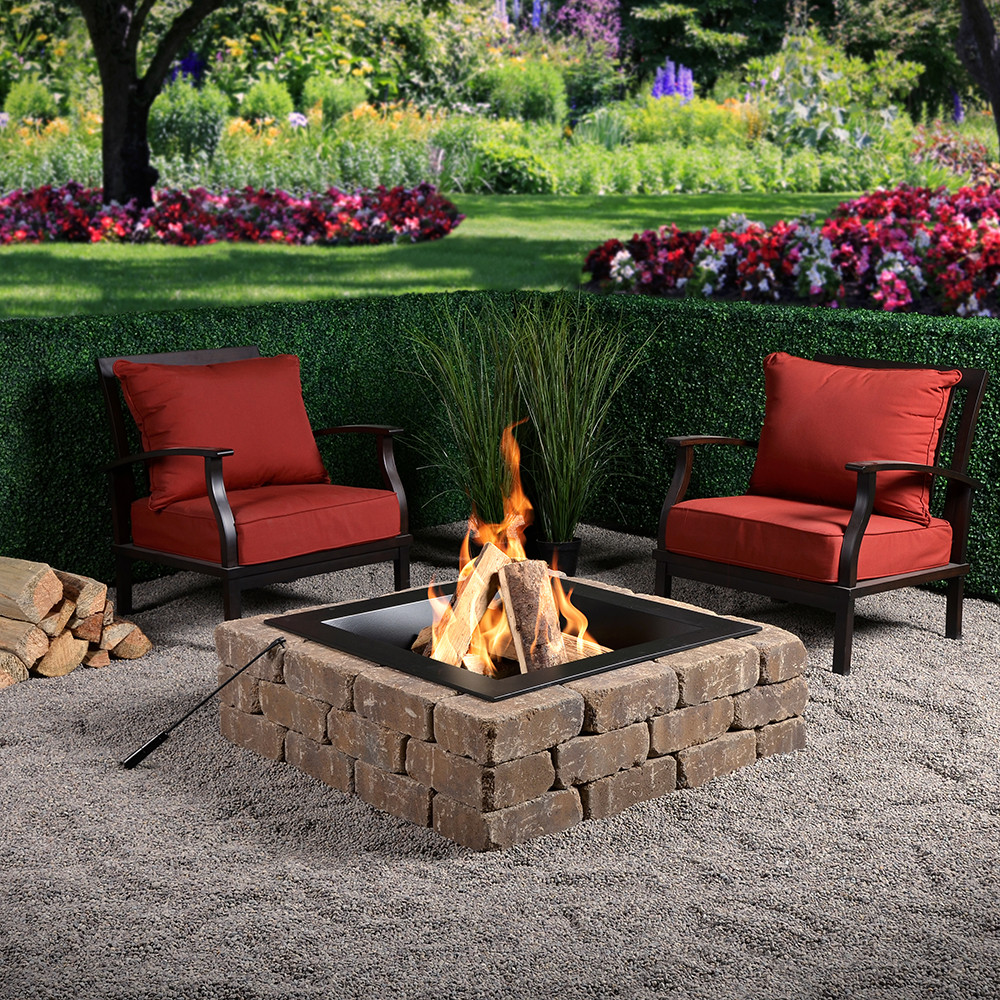
Evaluating Brand Reputation
When selecting a DIY outdoor gas fireplace kit, it’s important to choose a reputable brand known for quality and reliability. Research different manufacturers and read customer reviews to get a sense of their products’ performance and durability. Brands with a good reputation are more likely to provide detailed instructions, customer support, and warranty coverage, ensuring that you have a positive experience with your DIY project.
Considering Fuel Type
Outdoor gas fireplaces typically use either natural gas or propane as a fuel source. Natural gas is often preferred for its lower cost and continuous supply, but it requires a connection to your home’s gas line, which may involve additional installation work. Propane, on the other hand, is portable and easy to use but requires regular tank refills. Consider the availability and cost of each fuel type in your area, as well as the installation requirements, when choosing your fireplace kit.
Comparing Features and Accessories
Different DIY outdoor gas fireplace kits come with various features and accessories that can enhance their functionality and appeal. Some kits include adjustable flame controls, remote ignition systems, and decorative elements such as log sets or fire glass. Others may offer optional accessories like weather covers, screen guards, or built-in lighting. Compare the features and accessories included with each kit to find one that best meets your needs and enhances your outdoor living experience.

Interesting Articles You May Want to Check:
- Outdoor Living Fireplace
- Outdoor Fireplace Inserts Wood
- Outdoor Fireplace Atlanta
- Outdoor Fireplace Hearth
- Necessories Compact Outdoor Fireplace
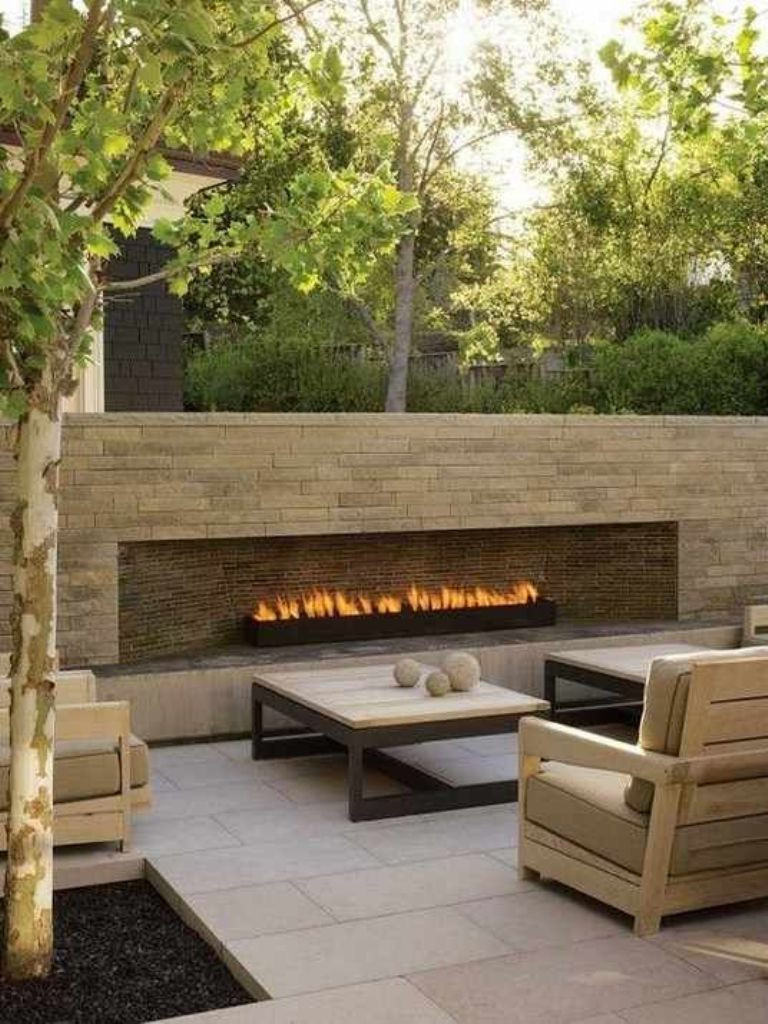
Installation Process
Preparing the Site
Before starting the installation of your DIY outdoor gas fireplace, it’s essential to prepare the site. Choose a location that is level, stable, and away from any flammable materials. Clear the area of debris, vegetation, and any obstacles that might interfere with the installation. If your kit includes a built-in model, you may need to construct a base or foundation to support the fireplace. Ensure that the site preparation adheres to any local building codes and safety regulations.
Assembling the Components
Most DIY outdoor gas fireplace kits come with detailed assembly instructions. Begin by laying out all the components and tools to ensure you have everything you need. Follow the manufacturer’s instructions step-by-step, starting with the base or frame and progressing to the burner and decorative elements. Pay close attention to the alignment and connection of parts to ensure a stable and secure assembly. If the kit includes a surround or enclosure, install these elements according to the instructions.
Connecting the Gas Line
Connecting the gas line is a critical step in the installation process. For natural gas, you’ll need to run a gas line from your home’s supply to the fireplace location, which may require the assistance of a licensed professional. For propane, you’ll connect the fireplace to a portable propane tank. In either case, it’s important to use high-quality gas lines and fittings and to follow all safety guidelines to prevent leaks. Once the connections are made, test for leaks using a soap and water solution or a gas leak detector.
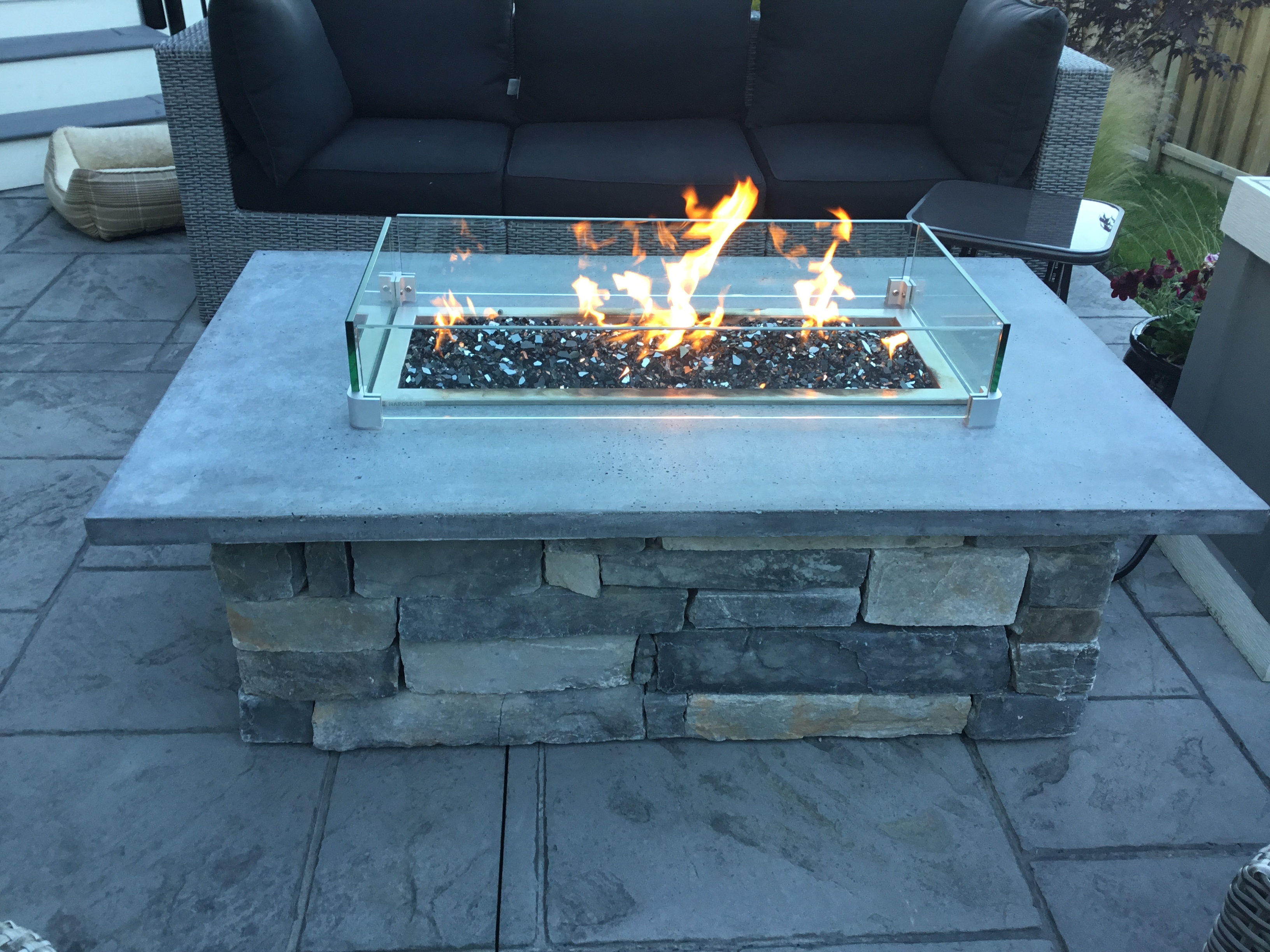
Installing the Ignition System
The ignition system is what allows you to light your outdoor gas fireplace safely and conveniently. Depending on your kit, this may be a manual ignition, such as a match or lighter, or an automatic system with electronic controls. Install the ignition system according to the manufacturer’s instructions, ensuring that all electrical connections are secure and properly insulated. Test the ignition system to ensure it functions correctly and reliably.
Adding Decorative Elements
Once the main components and gas connections are in place, it’s time to add any decorative elements included with your kit. This might include ceramic logs, fire glass, or other materials designed to enhance the appearance of the fireplace. Arrange these elements according to the instructions, ensuring they are placed safely around the burner. These decorative touches not only improve the look of your fireplace but also help to distribute the heat evenly.
Final Safety Checks
After completing the installation, perform a final safety check to ensure everything is in proper working order. Check all gas connections for leaks, inspect the stability of the fireplace structure, and verify that the ignition system works correctly. It’s also a good idea to familiarize yourself with the fireplace’s operation and maintenance requirements. Taking the time to conduct thorough safety checks will help ensure that your DIY outdoor gas fireplace is safe and ready for use.
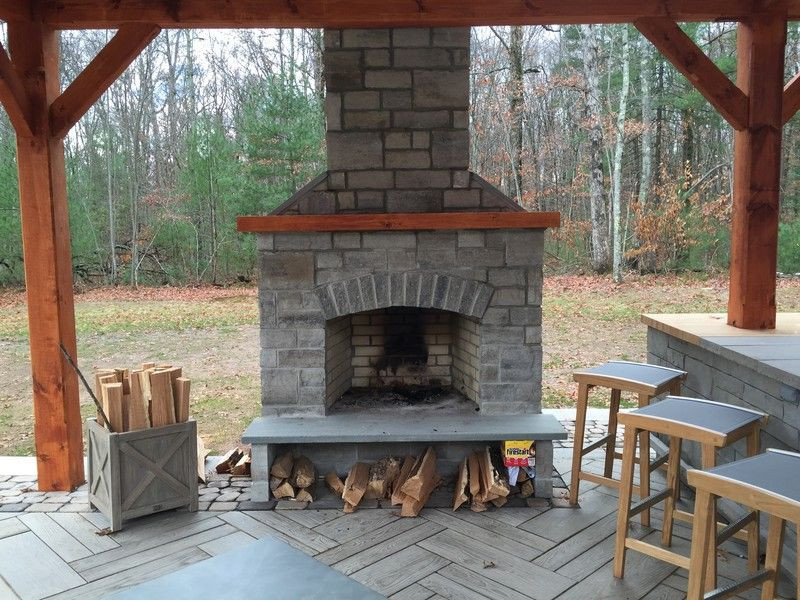
Maintenance and Care
Routine Cleaning
Regular cleaning is essential to keep your outdoor gas fireplace looking its best and operating efficiently. Clean the burner and decorative elements periodically to remove any dust, debris, or soot buildup. Use a soft brush or cloth to gently clean these components, and avoid using harsh chemicals that could damage the materials. For glass or metal parts, a mild soap and water solution can be effective. Keeping your fireplace clean helps maintain its appearance and performance.
Inspecting Gas Connections
Periodically inspect the gas connections and lines for any signs of wear or damage. Look for cracks, leaks, or loose fittings that could pose a safety risk. Use a soap and water solution or a gas leak detector to check for leaks around the connections. If you detect any issues, address them promptly by tightening connections or replacing damaged components. Regular inspections ensure that your fireplace operates safely and efficiently.
Protecting Against the Elements
Outdoor gas fireplaces are exposed to the elements, which can cause wear and damage over time. To protect your fireplace, consider using a weather cover when it’s not in use. This helps shield the fireplace from rain, snow, and UV rays, extending its lifespan. Additionally, if your fireplace includes metal components, periodically apply a rust-resistant coating to prevent corrosion. Taking steps to protect your fireplace from the elements helps maintain its appearance and functionality.
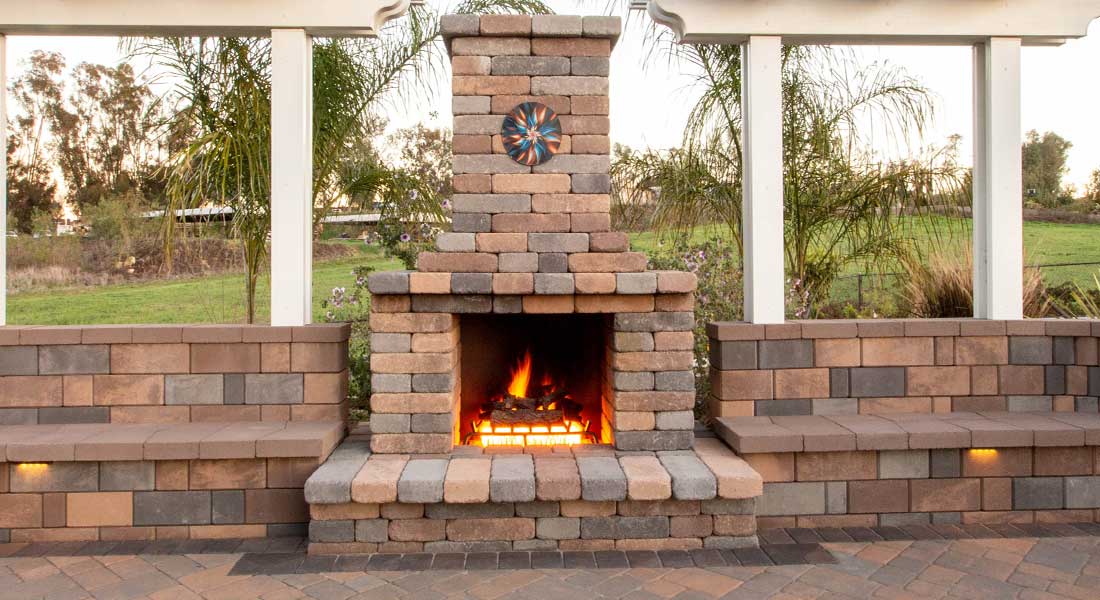
Seasonal Maintenance
Perform seasonal maintenance to ensure your outdoor gas fireplace is ready for use throughout the year. Before the start of each season, conduct a thorough inspection and cleaning, checking for any damage or issues that need to be addressed. Replace any worn or damaged parts, and test the ignition system to ensure it functions properly. Seasonal maintenance helps keep your fireplace in good working order and ready to provide warmth and enjoyment whenever you need it.
Troubleshooting Common Issues
If you encounter issues with your outdoor gas fireplace, there are several common troubleshooting steps you can take. If the fireplace fails to ignite, check the gas supply and connections to ensure they are secure and functioning. If the flame is weak or uneven, clean the burner and check for obstructions. For any persistent issues, refer to the manufacturer’s instructions or seek assistance from a professional. Addressing problems promptly helps maintain the safety and performance of your fireplace.
Long-Term Care
Long-term care of your outdoor gas fireplace involves regular maintenance and prompt attention to any issues that arise. Keep a maintenance log to track inspections, cleaning, and any repairs or replacements. This helps you stay organized and ensures that all aspects of the fireplace are properly maintained. Additionally, follow the manufacturer’s recommendations for long-term care, including any specific maintenance or safety guidelines. With proper care, your outdoor gas fireplace can provide years of enjoyment and warmth.
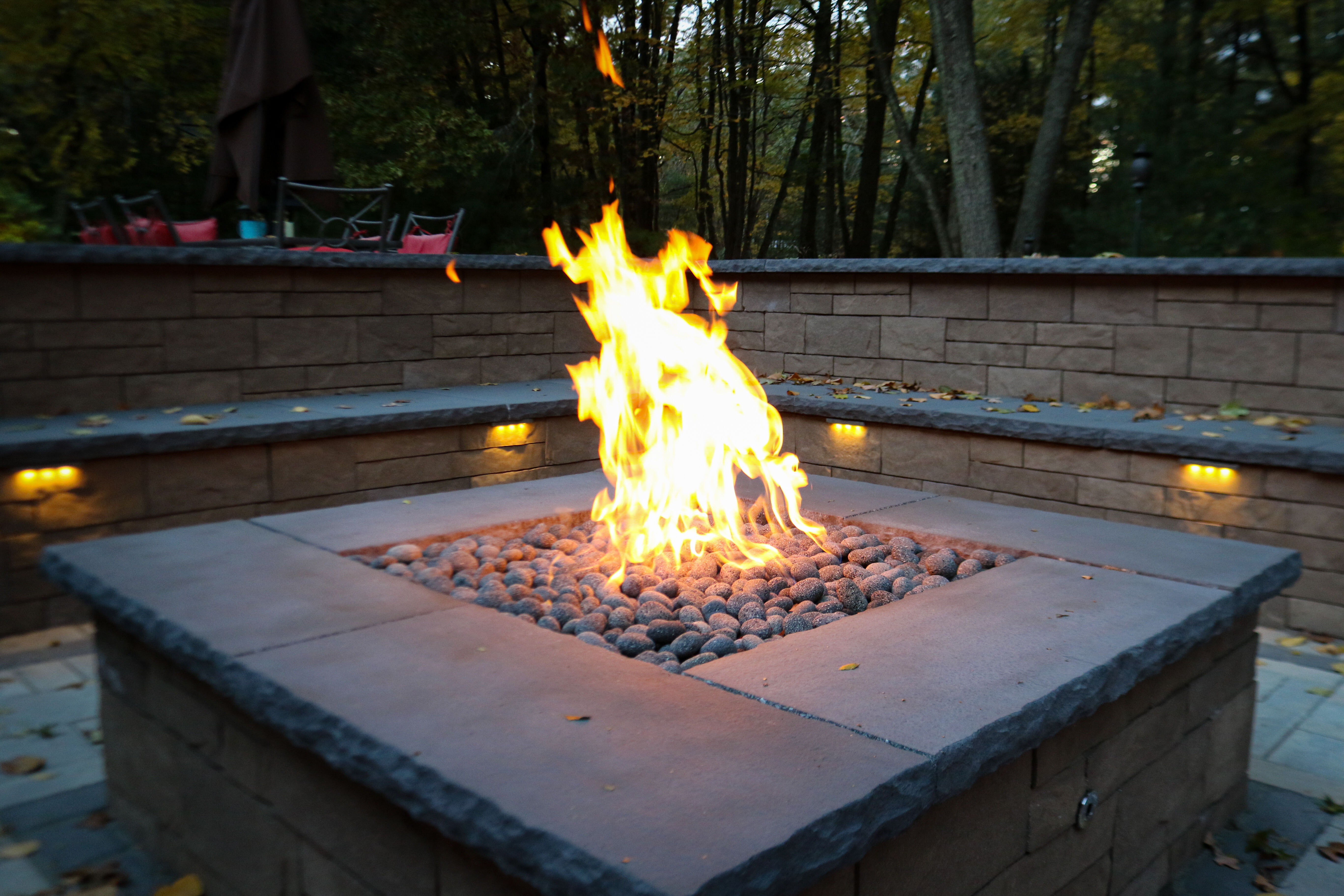
Enhancing Your Outdoor Space
Creating a Cozy Ambiance
An outdoor gas fireplace can serve as the centerpiece of a cozy and inviting outdoor space. Arrange seating around the fireplace to create a comfortable gathering area for family and friends. Use cushions, blankets, and outdoor rugs to add warmth and texture, making the space feel more like an extension of your indoor living area. String lights or lanterns can provide additional ambiance and enhance the overall atmosphere.
Complementing Your Landscape
Integrate your outdoor gas fireplace into your landscape design to create a cohesive and harmonious look. Consider the surrounding elements, such as plants, hardscaping, and outdoor structures, when choosing the style and placement of your fireplace. For a natural look, use stone or brick materials that blend with the landscape. For a more modern aesthetic, sleek metal or glass designs can complement contemporary outdoor spaces.
Adding Functional Elements
Enhance the functionality of your outdoor gas fireplace area by adding elements that make it more versatile and enjoyable. Consider incorporating built-in seating, such as benches or a pergola, to provide additional seating and shade. Outdoor kitchen features, such as a grill or prep area, can turn the space into an ideal spot for entertaining and dining. Adding these functional elements creates a multi-purpose outdoor living area that can be enjoyed year-round.
Incorporating Outdoor Decor
Personalize your outdoor gas fireplace area with decor that reflects your style and enhances the overall aesthetic. Use outdoor-friendly decor items, such as weather-resistant pillows, rugs, and artwork, to add color and personality. Decorative planters with seasonal flowers or greenery can add a touch of nature and create a vibrant, inviting space. Consider using a mix of textures and materials to create a visually appealing and comfortable environment.
Creating a Focal Point
Make your outdoor gas fireplace the focal point of your outdoor space by designing the area around it. Arrange furniture and decor to draw attention to the fireplace, creating a central gathering spot for relaxation and socializing. Use lighting to highlight the fireplace, such as spotlights or pathway lights, to enhance its presence and create a warm, inviting glow. Creating a focal point with your fireplace makes it the centerpiece of your outdoor living area.
Seasonal Decorating Ideas
Change up the look of your outdoor gas fireplace area with seasonal decorations. In the fall, use pumpkins, gourds, and autumn leaves to create a cozy, festive atmosphere. For winter, incorporate holiday lights, wreaths, and blankets to add warmth and cheer. In the spring and summer, use bright colors, fresh flowers, and outdoor cushions to create a vibrant, welcoming space. Seasonal decorating helps keep your outdoor area fresh and inviting throughout the year.

Common Mistakes to Avoid
Skipping the Planning Stage
One of the most common mistakes is skipping the planning stage before starting your DIY outdoor gas fireplace project. Without proper planning, you may encounter issues with space, design, or installation that could have been avoided. Take the time to plan your project thoroughly, including selecting the right location, checking local building codes, and gathering all necessary tools and materials. Proper planning helps ensure a smooth and successful project.
Choosing the Wrong Kit
Selecting the wrong DIY outdoor gas fireplace kit can lead to dissatisfaction and complications during installation. Consider your specific needs, preferences, and budget when choosing a kit. Research different options and read customer reviews to ensure you select a kit that meets your requirements. Avoid purchasing a kit solely based on price, as this can result in poor quality and performance.
Ignoring Safety Guidelines
Safety is crucial when installing and using an outdoor gas fireplace. Ignoring safety guidelines can result in gas leaks, fire hazards, or other dangers. Always follow the manufacturer’s instructions and local building codes when installing your fireplace. Regularly inspect the fireplace and its components for signs of wear or damage, and address any issues promptly to ensure safe operation.
Poor Site Preparation
Inadequate site preparation can lead to an unstable or improperly functioning fireplace. Ensure the site is level, stable, and free of debris before starting installation. If your kit requires a foundation or base, construct it according to the instructions to provide proper support. Proper site preparation is essential for a safe and durable installation.
Incorrect Gas Line Installation
Improper gas line installation is a serious safety hazard. If you’re not experienced with gas line installation, consider hiring a licensed professional to assist with this step. Use high-quality gas lines and fittings, and follow all safety guidelines to prevent leaks. Regularly inspect gas connections for any signs of damage or wear and address any issues immediately.
Neglecting Maintenance
Neglecting regular maintenance can lead to the deterioration of your outdoor gas fireplace and compromise its safety and performance. Establish a routine maintenance schedule that includes cleaning, inspecting gas connections, and protecting the fireplace from the elements. Regular maintenance helps ensure your fireplace remains in good condition and provides years of enjoyment.
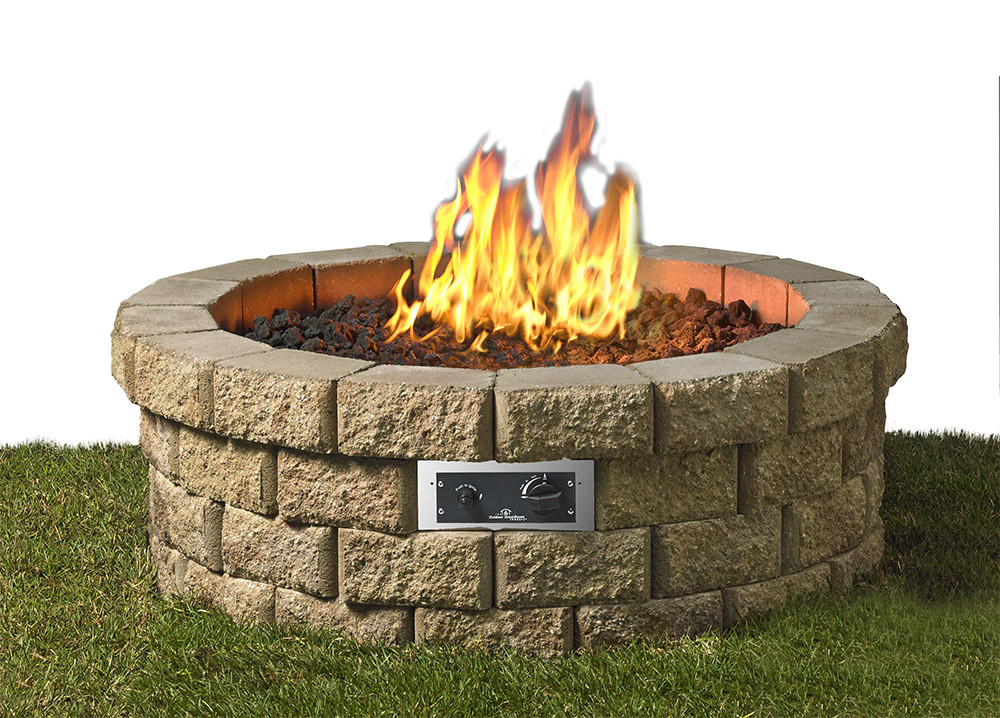
What are the advantages of using a DIY outdoor gas fireplace kit?
DIY outdoor gas fireplace kits offer several advantages, including cost savings, customization, and the satisfaction of completing a project yourself. These kits are designed to be user-friendly, providing all the necessary components and instructions for installation. By opting for a DIY kit, you can save on labor costs and choose a fireplace that fits your specific needs and preferences. Additionally, gas fireplaces are convenient, producing consistent heat and requiring minimal maintenance compared to wood-burning options.
How do I choose the right location for my outdoor gas fireplace?
Choosing the right location for your outdoor gas fireplace involves considering several factors, such as space, safety, and aesthetics. Select a location that is level, stable, and away from flammable materials. Consider the wind direction to prevent smoke from blowing into seating areas. Ensure the location complies with local building codes and regulations. Additionally, think about the overall layout and design of your outdoor space, choosing a spot that enhances the ambiance and functionality of the area.
What are the maintenance requirements for an outdoor gas fireplace?
Maintaining an outdoor gas fireplace involves regular cleaning, inspecting gas connections, and protecting it from the elements. Clean the burner and decorative elements periodically to remove dust, debris, and soot buildup. Use a soft brush or cloth and avoid harsh chemicals. Inspect gas connections for wear or damage and use a soap and water solution or gas leak detector to check for leaks. Protect the fireplace from weather by using a cover when not in use and applying rust-resistant coatings to metal parts. Seasonal maintenance and prompt attention to issues help ensure safe and efficient operation.
Can I install a DIY outdoor gas fireplace kit myself, or do I need professional help?
Many DIY outdoor gas fireplace kits are designed for homeowner installation, with detailed instructions provided. However, certain aspects, such as gas line installation, may require professional assistance, especially if you are not experienced with gas connections. Proper installation is crucial for safety and performance, so consider hiring a licensed professional for gas line installation and any other complex tasks. For simpler installations, follow the manufacturer’s instructions closely to ensure a successful project.
What fuel options are available for outdoor gas fireplaces, and which is best?
Outdoor gas fireplaces typically use either natural gas or propane. Natural gas is often preferred for its lower cost and continuous supply but requires a connection to your home’s gas line, which may involve additional installation work. Propane is portable and easy to use but requires regular tank refills. The best fuel option depends on the availability and cost of each fuel type in your area, as well as the installation requirements and your specific needs.
How do I troubleshoot common issues with my outdoor gas fireplace?
If you encounter issues with your outdoor gas fireplace, start by checking the gas supply and connections to ensure they are secure and functioning. If the fireplace fails to ignite, clean the burner and check for obstructions. If the flame is weak or uneven, inspect the burner and decorative elements for blockages. For persistent issues, refer to the manufacturer’s instructions or seek assistance from a professional. Regular maintenance and prompt attention to problems help ensure the safety and performance of your fireplace.

Related Posts: